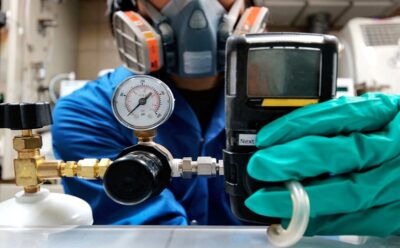
Marine Safety: Understanding the Hazards
Understanding Maritime Safety Hazards What is Welding Safety? Welding is a vital industrial process used in various sectors, from construction
Hazardous waste management is a critical part of any manufacturing facility. It is essential to properly manage hazardous waste to protect the environment, workers, and the public. The first step in managing hazardous waste is to identify the types of hazardous waste generated in the facility. This can include chemicals, solvents, oils, and other potentially hazardous materials. Once you identify the types of hazardous waste, you should develop a plan for safely storing, transporting, and disposing of them. The types of waste you deal with will depend on the activities within your facility.
In this blog, we will focus on the crucial practices required to handle these dangerous materials safety and effectively.
Generally, the categories of hazardous waste are ignitable, corrosive, reactive and toxic.
The next step is to ensure the facility has the proper equipment and personnel. This includes safety equipment such as protective clothing, respirators, and eye protection. It is also necessary to train personnel on handling and disposing of hazardous waste.
Once you have the proper equipment and trained personnel, it is time to develop a system for tracking and monitoring hazardous waste. This includes keeping records of the types of hazardous waste generated, the amount generated and the disposal methods.
Check records frequently to ensure the facility complies with all applicable regulations.
Management of hazardous waste is a critical issue that requires meticulous attention and strict compliance with environmental and public health regulations. A manufacturing facility can ensure that hazardous waste is managed and disposed of safely by ensuring proper compliance and emergency planning. By adopting to the safety steps outlined in this guide, entities can manage hazardous waste effectively, ensuring a safer environment for current and future generation.
With over 15 years of relentless commitment to excellence, NICO Marine has established itself as a reliable supplier of quality products to the marine and offshore oil & gas industries. Our HSE professionals have years of experience in workplace safety and will be happy to assist you in making the right decision.
Contact us for a free consultation.

Understanding Maritime Safety Hazards What is Welding Safety? Welding is a vital industrial process used in various sectors, from construction

Importance of HSE Management System What is Welding Safety? Welding is a vital industrial process used in various sectors, from

Welding Safety & Welding Hazards What is Welding Safety? Welding is a vital industrial process used in various sectors, from

What is Oil & Gas Safety? Oil & Gas Safety: Top Hazards and Solutions The Oil & Gas industry is

Join our email list to receive product updates, clearance offers, industry insights and more
Join our email list to receive product updates, clearance offers, industry insights and more
504 Dattani Business Park
Vasai West, Palghar
Mumbai 401202
© 2024 NICO Maritime Safety. All Rights Reserved